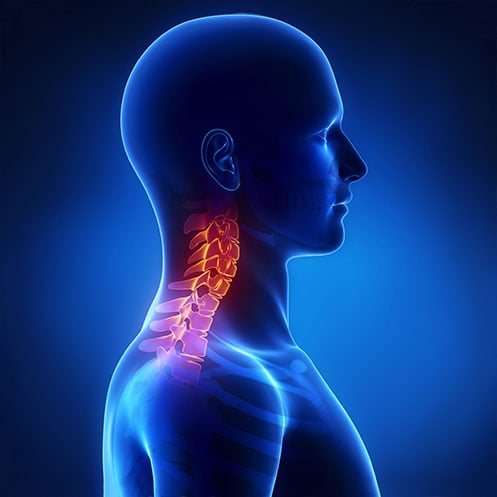Extensor Tendon Injuries: Causes, Symptoms, and Treatment Options
Extensor tendons are strong bands of connective tissue that connect the muscles of the forearm and hand to the bones in the fingers and thumb, allowing for essential movements such as finger and wrist extension. Positioned just beneath the skin on the back of the hand and fingers, these tendons are highly susceptible to injury from lacerations, overuse, and trauma. Damage to these tendons can greatly impact hand function and overall quality of life.
At The Center for Hand and Upper Extremity Surgery (HUES), we are at the forefront of diagnosing and treating extensor tendon injuries. Our team of fellowship-trained orthopedic and plastic surgeons brings decades of specialized experience, utilizing state-of-the-art microsurgical techniques and innovative tendon reconstruction methods. With a commitment to personalized patient care, HUES offers cutting-edge solutions that restore function, reduce recovery time, and optimize long-term hand health.
Understanding Extensor Tendon Injuries
The most common causes of an extensor tendon injury include:
- Cuts: A laceration on a hand or finger could injure an extensor tendon.
- Overuse: Strain or repetitive motion can result in extensor tendon injury.
- Trauma: A stub, jam, crush, or other accident can damage an extensor tendon.
What Are the Symptoms of an Extensor Tendon Injury?
If you suspect you may have an extensor tendon injury, look for these common symptoms:
- Weakness or declining hand strength
- Pain, swelling, or a “crunchy” sensation on the back of the hand
- Difficulty straightening one or more fingers or extending the wrist
- Tingling, numbness, or visible deformity
- A recent cut or jam to the hand or fingers
Seeking professional help is essential if you experience any of these symptoms, especially if movement is impaired or pain persists. Early intervention can prevent long-term complications and improve outcomes. If left untreated, extensor tendon injuries can lead to permanent stiffness or loss of function, making timely diagnosis and treatment crucial.
Diagnostic Process
Diagnosis typically involves both clinical assessment and imaging. You will receive a physical examination and then likely an X-ray, ultrasound, or MRI.
It is important to get extensor tendon injury zones evaluated as soon as possible, as prompt treatment can reduce the risk of loss of function. Diagnosis typically includes:
- Physical examination: One of our specialists will assess hand function, strength, and range of motion by gently manipulating the fingers, wrist, and hand to determine the extent of movement limitation. They will check for swelling, tenderness, deformities, and any irregularities in tendon function. Grip strength and resistance tests may also be performed to evaluate muscle engagement and potential nerve involvement.
- Imaging: X-rays are used to rule out fractures or joint abnormalities that may accompany a tendon injury. Ultrasound imaging provides a real-time view of the soft tissues, allowing specialists to assess tendon movement and detect any partial or complete tears. In more complex cases, an MRI may be recommended for detailed, high-resolution visualization of the tendons, ligaments, and surrounding structures.
- Zone assessment: Extensor tendon injuries are classified into specific zones based on their location along the hand and fingers. Each zone requires a unique treatment approach, as tendons in different areas have varying anatomical characteristics and healing capacities. Identifying the injury zone helps determine whether conservative management or surgical intervention will yield the best outcome.
Not sure if your symptoms are serious? Request an evaluation today to avoid long-term complications.
Surgical Treatment Options For Tendon Injuries
In many cases, surgery is needed to treat tendon injuries. A proper procedure will repair the wounded tendon and prevent permanent damage and deformity. Many patients see a full or nearly full restoration of function when combining surgery with a targeted rehabilitation plan. Surgical treatment options include:
Tendon Graft Surgery
When a simple repair is not possible due to a substantial gap between the torn ends and/or insufficient or unsuitable remaining tissue, a tendon graft can be used. This surgery “grafts” a piece of tendon, often from the foot or forearm, onto the injured tendon to cover the gap and allow for reconstruction.
Tendon Repair Surgery
This same-day procedure involves suturing the torn ends of the tendon back together to restore normal movement and function. Tendon repair is the preferred option for a “clean” tear with minimal tissue loss, allowing for a straightforward healing process. Precision suturing techniques help minimize scarring and optimize tendon strength, ensuring better long-term hand mobility.
Tendon Transfer Surgery
This procedure transfers a healthy tendon to the injured area to restore function. The donor tendon stays attached at its origin point but is reconnected to a new insertion point. Tendon transfer surgery is a good option when the injured tendon is too damaged to directly repair or use a graft to heal.
Recovery and Rehabilitation
Recovery time varies depending on the level of damage and mode of treatment, but with proper care, many patients regain near-normal hand function in just 8–12 weeks. This includes splinting, progressive exercises to reestablish function and movement, and a gradual return to everyday activities.
Adhering to the prescribed rehabilitation plan is crucial for recovering functionality. With proper treatment and rehabilitation, most patients experience significant improvement in function and mobility. While minor injuries may heal with conservative care, surgical patients often regain near-normal hand use within a few months. Adherence to post-treatment guidelines, including therapy and activity modifications, is key to achieving the best possible outcome.
When Should You See a Specialist for Tendon Pain?
If you have recently injured your hand or wrist and notice pain, weakness, or trouble extending your fingers, do not wait. Extensor tendon injuries can worsen if untreated. Seek care if:
- You notice reduced hand strength or dexterity
- You cannot fully extend your fingers or wrist
- There is a visible deformity, cut, or jammed finger
- Symptoms persist longer than a few days
Seeking Treatment For an Extensor Tendon Injury
If you are experiencing symptoms of an extensor tendon injury, prompt evaluation is crucial. The specialists at The Center for Hand and Upper Extremity Surgery provide expert diagnosis and advanced surgical treatment tailored to your needs. As a leader in hand and upper extremity care, HUES combines innovative surgical techniques with personalized rehabilitation plans to optimize recovery. Our fellowship-trained surgeons specialize in complex tendon repairs and reconstruction, providing world-class care for patients seeking the best possible outcomes. Patients from across the country trust us for our unparalleled expertise and commitment to excellence in restoring hand function.
Do not let hand weakness or stiffness become permanent. Request your consultation with HUES today and start your recovery with a team of fellowship-trained experts.









